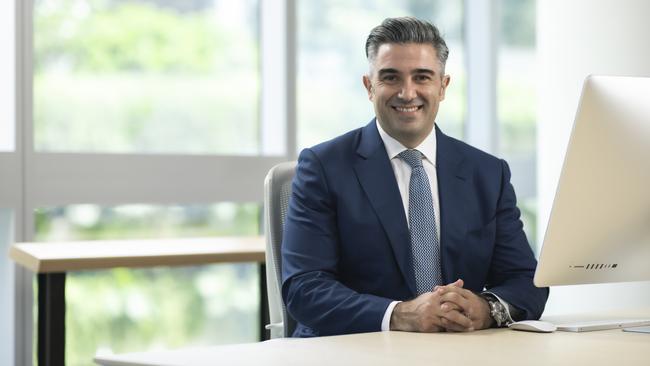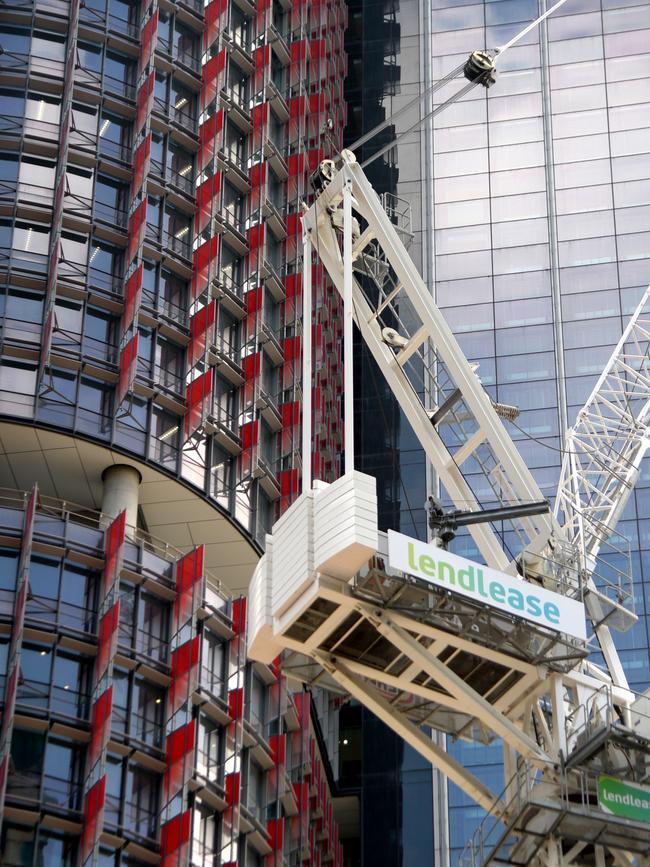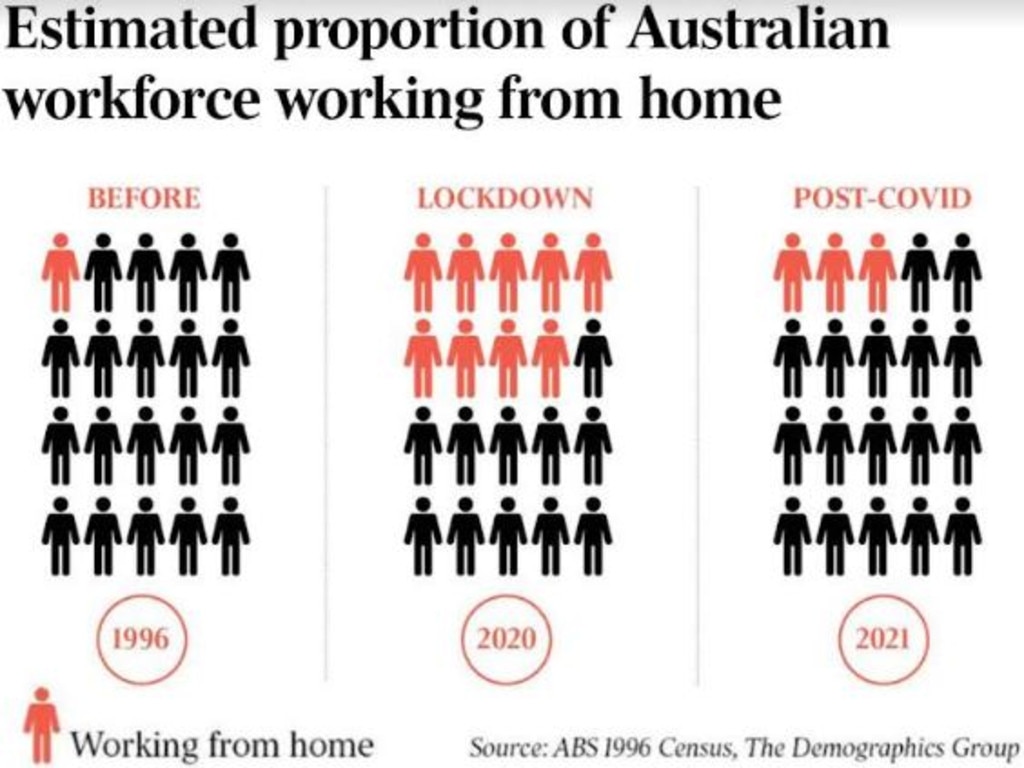Lendlease casts global net as it fights to regain blue chip status
The Australian development icon has laid out an ambitious path for the next five years.

Once hailed as a blue-chip diversified business with firing global operations, Australian development icon Lendlease has signalled that it again wants to successfully take to the global stage.
But the company needs to carefully define – and hit – its goals in the wake of the coronavirus pandemic to avoid another tough era for its sharemarket investors.
The company’s new chief executive, Tony Lombardo, took writedowns at his first results last month as he set a bold course for the company.
Lendlease had a tough pandemic, raising $1.15bn worth of discounted equity as it reset its business, and veteran chief executive Steve McCann exited for Crown Resorts, with long-time executive Mr Lombardo taking over.
He has already revealed his big ambitions for the company – to roll out it’s $114bn development pipeline around the world more quickly and effectively. But questions remain over whether it will be able to pull off this feat and again claim the mantle of Australian icon.
There is little question that the company’s project roster, including a $21bn project for Google to develop three mini-communities in the San Francisco Bay Area, and redevelopments across London ranging from Euston Station to a site on the River Thames, or mixed-use developments in Singapore, is a tribute to its development smarts.
The company is also busy in Kuala Lumpur, Singapore, Milan, Los Angeles and New York. There are few areas at the cutting edge of real estate where it is not active, and it has shifted hard into build to rent and most recently has dived into a data centre project in Japan.
However, the financial returns have not been commensurate for investors as they are simply too rocky for most to bear. Most listed property investors are relieved that Lendlease did not merge with satellite the GPT Group ahead of the financial crisis, due to its volatility.
The new regime is well aware of past failings and has admitted that its local residential estates partly missed the housing boom and has changed the way it accounts for project profits.
Mr Lombardo is not hesitating and this week reinforced the strategy, confirming a move to speed production to $8bn worth of projects annually and to have funds management play a much larger role in the operation.
The planned step-up is timed so the company capitalises on the bounce out of the coronavirus pandemic, with a splurge on city defining precincts to come around the world, as economies are pumped up by governments desperate for growth.
Long-time company observers believe it’s latest iteration can work but suggest that quite radical surgery is required to restore the company to the top echelons of corporate Australia.
Resolution Capital portfolio manager Andrew Parsons said Lendlease had not been a good long-term risk adjusted investment over the past two decades.
He cited missteps going back to a hasty push into offshore real estate funds after it sold off MLC, then a powerful diversified funds management business, which had given it top cache among investors.
He said that construction was a part of Lendlease’s DNA but added that the market had consistently failed to value it appropriately and understand its limitations.

Mr Parsons said that after losing GPT from its orbit the company switched to global urban development and building with a funds capability. This drove it into high-profile projects, including Sydney’s Barangaroo, Melbourne’s Docklands, the London Olympics village and Bluewater in Britain.
But it stumbled when enticed by the rosy outlook for infrastructure spending – when Wal King-era Leighton Holdings was surging around the world – by entering engineering. The subsequent $2bn disaster is now mainly behind the company.
Mr Parsons said Lendlease now appeared an interesting proposition: a developer with a capability in large scale mixed-use urban renewal projects. But he added that in reality, the backbone was residential development which typically underpinned other uses.
“It is trying to increase the annuity income streams by putting some of the developed components in managed funds. It also tries to improve return on equity through capital efficient joint venture deals,” he said.
He added that key questions remained about whether Lendlease was a real investment opportunity of latent value ready to be unlocked or a value trap that kept stumbling as a public company while investors tried to understand its return profile.
The new chief executive is alive to the dilemma and has moved quickly to put his stamp on the next era.
“We have got a lot to do to really make sure we deliver on our full potential,” Mr Lombardo told investors this week, admitting the company had not hit financial targets, partly due to Covid-19.
But he is committed to hitting the $8bn production target in 2024.
“We want to scale up in the investment space; we are aiming to launch new products and mandates,” he added, as the company targeted a $70bn funds empire.
Lendlease is also making its management leaner and is looking to get more of its projects through planning. It will also seek to win more in Asia and Australia after big deals in Europe and the US.
“One of the key areas for us going forward is to make sure we have got the right pipeline in Australia and Asia,” Mr Lombardo said.
The company had already made strides into life sciences, build to rent and data centres. Investors see light at the end of the tunnel.
Barrenjoey analyst Ben Brayshaw said the new CEO reaffirmed that Lendlease remains a turnaround story, expecting material earnings recovery on a three-year horizon. “It is also simplifying its business mix and improve earnings quality,” he said.
“While these are likely to take time to implement and in the near-term Lendlease seem intent on resetting expectations, it is positive to see Lendlease recognise the need for change,” he said.
The company produced an impressive result in the wake of the pandemic in terms of new business wins and project conversions also firmed up its $20bn-plus work-in-progress objective.
“In our view the strategy day may leave some equity investors disappointed, who were looking for a share price catalyst and/or accelerated path or more decisive step to repositioning the business,” Mr Brayshaw said.
“However, it was encouraging (to us) to see Lendlease talk about a potential change in ownership strategy for key businesses within development and investments.”
Lendlease also flagged it will review its ownership position in US military housing management rights, its half stake in its retirement portfolio and its land estates. All up these could be worth to $2bn–$2.5bn on the analyst‘s reckoning.
And big mergers may be needed to get to where the company wants to be.
Jefferies analyst Sholto Maconochie said that Lendlease’s funds target of more than $70bn by fiscal 2026 looked ambitious without M&A and winning or acquiring new mandates.
He estimated $15bn-$16.5bn would come from its current pipeline with the residual 45 per cent to come from new mandates and mergers. “Lendlease‘s strategy update was largely unchanged from its update a year ago and at its fiscal 2021 result,“ he said.
”A change in booking profit upfront from joint ventures is welcomed, improving earnings quality with less volatility, but Lendlease needs to convert pipeline to product and execute well to meet its lofty fiscal 2024 targets and re-rate.”
The new era has only just begun.








To join the conversation, please log in. Don't have an account? Register
Join the conversation, you are commenting as Logout